
Dog separation anxiety can be a serious problem, especially because if it’s left untreated, there’s a good chance it’ll get worse. Unless you’re an expert in dog training, your attempts to appease your dog might actually reinforce the unwanted behavior.
Although not all dogs will have anxiety that leads to separation anxiety, as dog owners, it is best to learn about the causes, symptoms, and treatment options. Helping your dog with separation anxiety will prevent them from having it.
As pet owners, try not to worry — if you’re providing a loving, well-rounded home life for your pet, it’s 100% not your fault.
There are steps you can take to help overcome dog separation anxiety, and if you need assistance, never feel ashamed to seek help from a dog trainer. Read on to discover everything you need to know about helping a dog with separation anxiety.
Why do doodles suffer from separation anxiety?
That’s a million-dollar question, but the answer to Doodles and separation anxiety may come from their parents. Poodles are smart and incredibly friendly. This looks great on paper but these traits can result in problems for the person whose skills are not properly developed.
They have always been a good sport dog and are very active and they love having something to do, particularly with the dog owners. Some breeds of Poodles have behavioral differences.
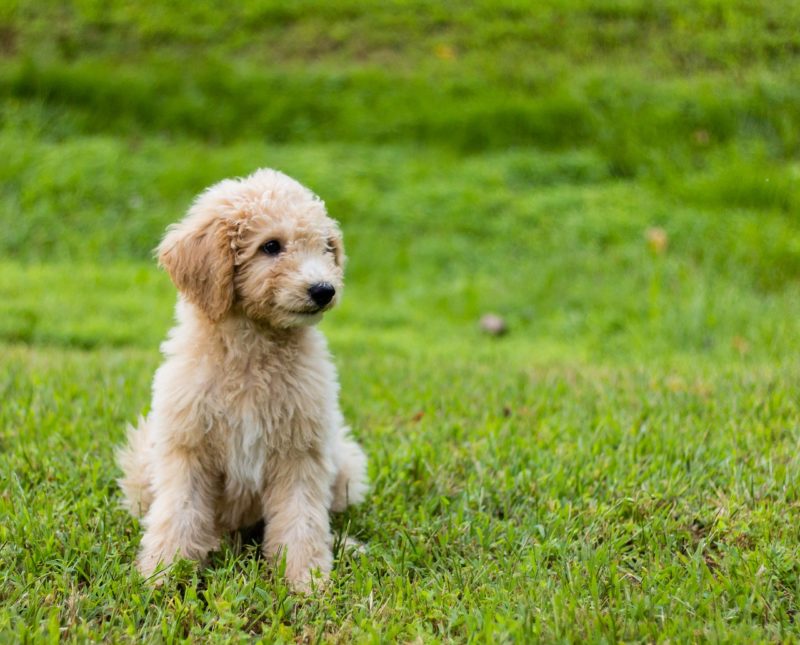
What Is Dog Separation Anxiety?
Dog separation anxiety is triggered when they become upset after being separated from the people they are attached to. If you’re worried about your dog’s behavior but you’re not quite sure whether it’s a developing separation anxiety, you’ll find the following guide useful. These are the main symptoms of anxiety in dogs:
Vocalizing
When the neighbors report that your dog is barking, yelping or howling when no one’s home, this is a common sign of dog separation anxiety. This type of vocalizing is often persistent, and you might notice your dog is hoarse or exhausted from barking when you get home.
Scratching and Chewing
If you’ve come back to your property to find your beloved pet with a bloodied paw or broken teeth and find areas around doors are scratched, this is a solid sign of severe separation anxiety in dogs.
Unless your dog demonstrates this behavior while you’re present, you can take it as a sign that it’s trying to escape to find you. If it also does this while you’re there, take them to a veterinary behaviorist as soon as possible as it’s a sign of a broader issue.
Behavior Problems
Destructive behavior that only happens when you’re not present is a sign of dog separation anxiety. Destroying objects around the home, destructive chewing on window and door frames and digging in inappropriate places might seem like bad behavior — but it’s actually a cry for help.
Toileting
If your dog knows how to urinate and defecate appropriately for the most part while you’re home, going potty on the floor when you’re away can be a sign of dog separation anxiety.
Some dogs also eat their defecation when they’re anxious. This is best explained by the fact that dogs (like people) often crave food when they’re stressed, and in the absence of actual food, many domestic breeds turn to their own excrement.
Signs of Dog Separation Anxiety
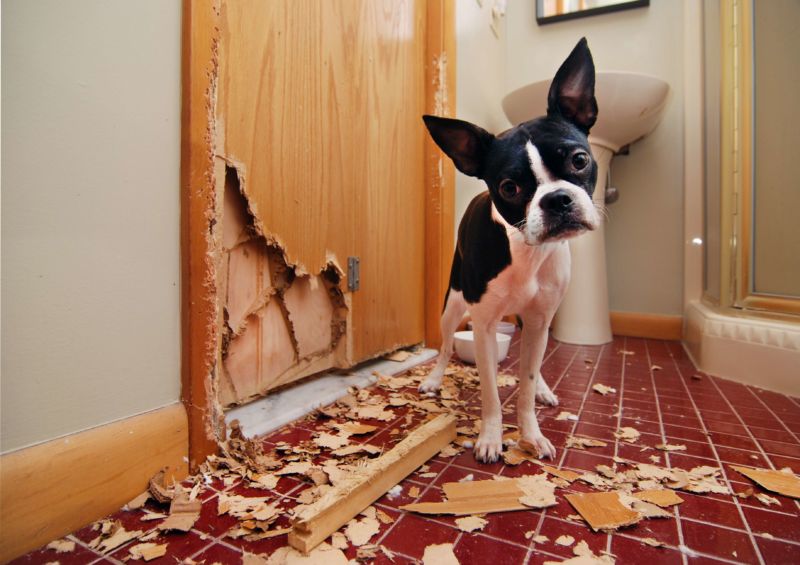 If your dog is super-excited to see you when you get back, that doesn’t mean it hasn’t been going through a traumatic experience while you were away.
If your dog is super-excited to see you when you get back, that doesn’t mean it hasn’t been going through a traumatic experience while you were away.
Many dogs require counterconditioning or behavior modification to prevent dog separation anxiety, which also has more subtle signs to look out for.
It might be a good idea to use a hidden camera to check that your dog isn’t doing any of the following while you’re not home:
- Excessive drooling
- Trembling
- Pacing
- Repetitive self-soothing behaviors
- Vomiting
Causes of Separation Anxiety in Dogs
Some dogs are simply born with a nervous disposition, while others display the behavior as a reaction to changes in their routine or difficult experiences.
Your dog’s behaviors are part of their panic response and they are not deliberately doing it against you. Either way, with socialization, desensitizing and sometimes supplements, you can train your dog to overcome anxiety.
Schedule Shifts
If a beloved family member moves out to go to college, someone gets a new job or changes shift patterns or any other major shift in schedule, it can lead to separation anxiety in dogs.
For example, if you’ve been working from home and spending all day every day with your pet by your side and then you go back to the office, there’s a good chance your dog will respond unfavorably.
Traumatic Events
Dogs that have experienced trauma (such as being abandoned or living in a violent household prior to coming home with you) are very prone to dog separation anxiety.
In severe cases, no amount of training can fully repair the damage that’s already done, but anti-anxiety medication and lots of love can be the perfect remedy.
Moving
Dogs are territorial animals, and familiarity provides them with comfort and a sense of safety. Moving to a new environment can be extremely daunting for a dog, but there are steps you can take to put its mind at ease, which we’ll discuss in detail later on.
Change of Family
Even if there isn’t a history of trauma, a change in family is a big deal to dogs, because they get incredibly attached to their guardians.
The amount of time they’ve already spent with a family usually dictates how severe the dog separation anxiety is. Provided you take the correct steps, you can overcome this initial obstacle and develop an unbreakable bond with your pet.
How to Treat a Dog With Separation Anxiety
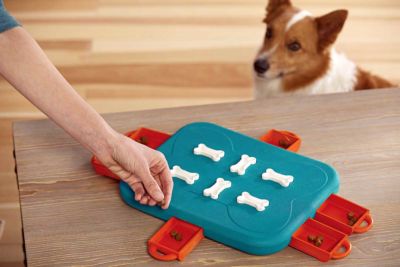 Now that you understand exactly what separation anxiety in dogs looks like and what causes it, you’re in a position to make the necessary adjustments. Every dog is different, so there’s no one-size-fits-all cure.
Now that you understand exactly what separation anxiety in dogs looks like and what causes it, you’re in a position to make the necessary adjustments. Every dog is different, so there’s no one-size-fits-all cure.
The best approach to help your dog deal with separation anxiety is to try out as many approaches as possible to find out what works best.
Let’s take a look at the best ways of helping a dog with separation anxiety:
Change Departure Cues
One of the first things you can do is change your routine before leaving the house. Leave through a different door, move the place where you keep your keys, change the order in which you put your coat and shoes on and give them a treat just before you go. Something tasty just before you leave gives them a positive association with you going.
Pet Parents Should Avoid Emotional Goodbyes
When you make a fuss of leaving the house and returning home, you reinforce the unwanted behavior. Plus, it provides too much contrast for your pet, which has to sit and home and wonder where you are and when you’ll come back once an emotional goodbye is over.
Keep greetings low-key and save the excitement for when your dog performs a behavior you want them to keep repeating.
Exercise and Mental Stimulation
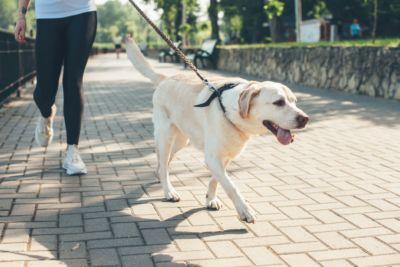
Many of the destructive behaviors your dog displays are often a result of pent-up energy, and they come out when the dog feels anxious.
By ensuring your dog gets ample exercise before you leave, you increase the chances of them settling down and relaxing instead of tearing holes in the curtains.
Providing mental stimulation is also effective at treating anxious behaviors in dogs. Distract them by hiding treats around the home for them to find, giving them a puzzle toy stuffed with food to decipher and ensuring they have enough to do to stay occupied while you’re away for short periods.
Create a Designated Space for Your Anxious Dog
If you’ve never tried crating, it might be worth a shot if your dog is displaying signs of dog separation anxiety.
Far from being cruel, a crate provides your dog with its own personal retreat that no one else goes into — it’s theirs and theirs alone. Putting them in a crate where they feel safe and comfortable can be a great way to help heal anxiety and help your dog relax.
Avoid Leaving Them for Long Periods of Time
It might seem obvious, but leaving a dog short term affects them far less than long term. If you’re in a household where no one’s home for long periods of time, dog separation anxiety is much more likely. In extreme cases, rescheduling around your pet might be the best answer.

Get a Pet Sitter
If you’ve got the cash to spare, consider getting a dog sitter or dog walker to spend some time with your dog while you’re away. Dogs are highly social pack animals, and spending lots of time alone goes against their natural instincts.
Training Sessions at Doggie Day Care
If you don’t fancy getting a pet sitter, why not take your dog to doggie day care? They usually have classes to teach you and your pup how to overcome anxiety. Obedience training can also be a huge help while you’re in the process of making the necessary changes to your schedule.
They can also have the opportunity to socialize with other dogs. This can be a perfect opportunity to bond with your dog. It is also best not to leave your dog home alone while the training goes on.
Could Symptoms of Dog Separation Anxiety Be Signs of Something Else?
- Isolation distress
- Boredom
- Issues specific to urinating
- Insufficient house or crate training
- Excessive barking
- Medication
Is Your Household Missing Something?
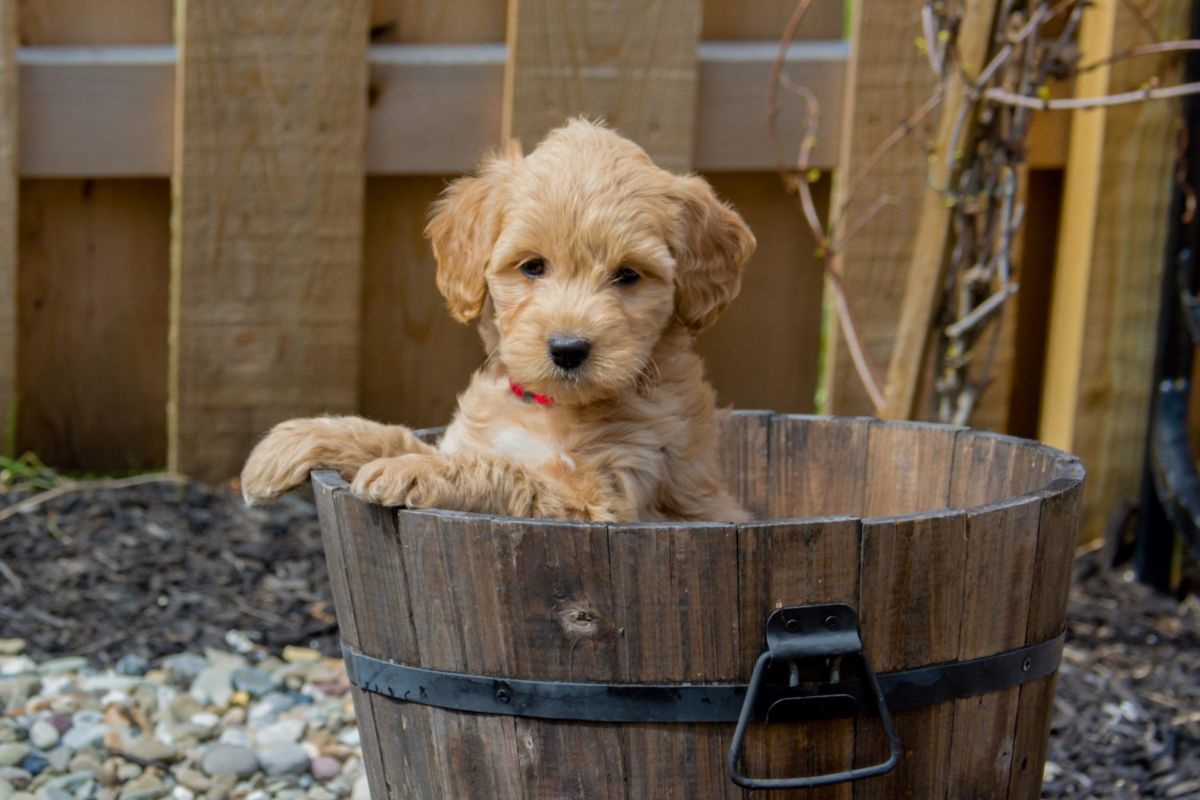
If you don’t yet have a dog and you’re considering one, but you’re worried you might not be home enough — why not get in touch with us at Pride & Prejudoodles? Our passionate team of canine experts can offer advice and guidance about choosing the best doodle dog for you and your family’s unique circumstances.
